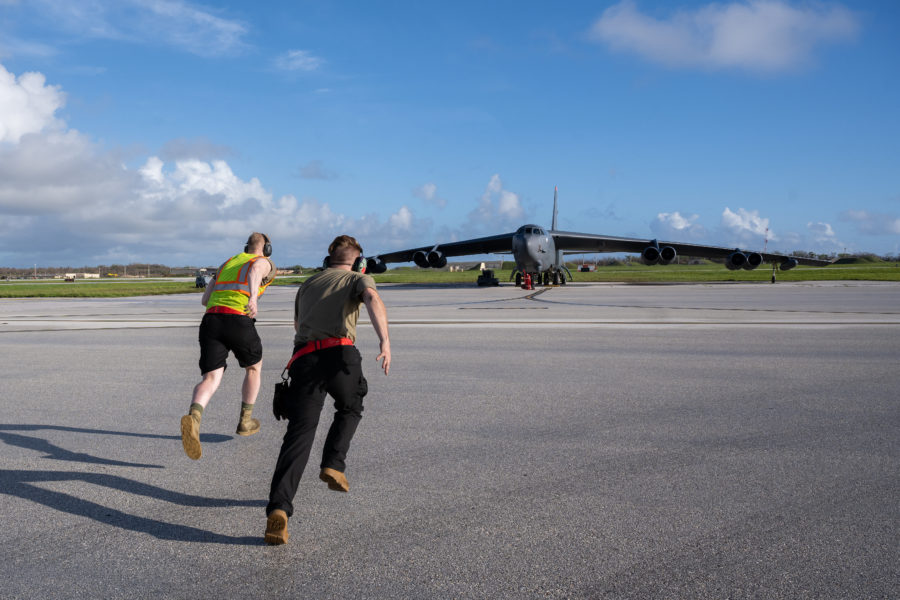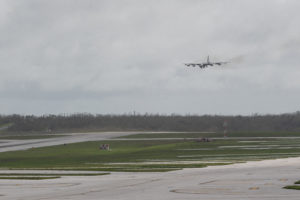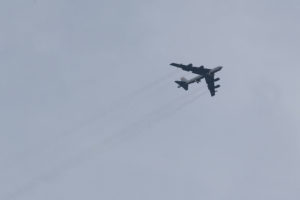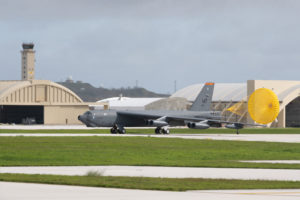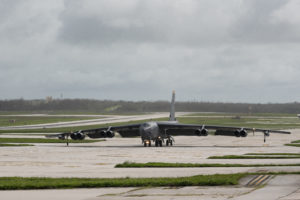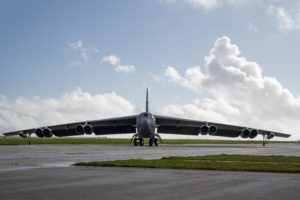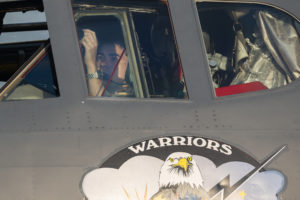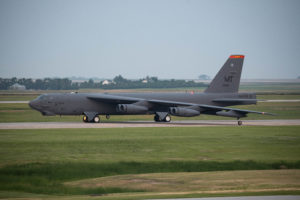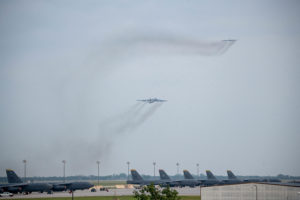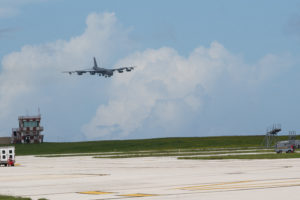Four B-52s and more than 200 Airmen arrived at Andersen Air Force Base, Guam, this week to kick off another Bomber Task Force deployment in the Indo-Pacific.
The Stratofortresses, from the 5th Bomb Wing at Minot Air Force Base, N.D., arrived June 12 and June 14, according to images released by the Air Force, and immediately participated in their first BTF mission on June 15.
The deployment to Guam comes less than a month since the island was hit by Super Typhoon Mawar, prompting the Air Force to deploy its Natural Disaster Recovery Team to Andersen. The base report no serious injuries or aircraft damage, but some facilities were damaged or lost power during the storm. Permanent change of station moves to Andersen were paused for 60 days to ease the recovery.
Bomber Task Force deployments typically last a month or more and involve frequent missions throughout the region to train and integrate with allies, demonstrating airpower and combined operations.
“Being here in the Indo-Pacific with the Bomber Task Force allows our forces to showcase our ability to deploy anytime, anywhere in support of the combatant commander’s objectives,” Lt. Col. Ryan Loucks, BTF commander, said in a statement. “Training and operating in the priority theater allows us to demonstrate our continued readiness, willingness and commitment to our Allies and partners.”
This marks the second deployment of B-52s to Guam in three months—four bombers from Barksdale Air Force Base, La., arrived March 30 and returned home at the end of April. During that time, they completed 29 sorties while integrating with four allied partners, according to a Pacific Air Forces release.
On the other side of the world, another Bomber Task Force deployment is underway in Europe—B-1s from Dyess Air Force Base, Texas, landed at RAF Fairford, U.K., on May 23 and have participated in the Arctic Challenge Exercise and Air Defender 23, as well as a mission over the Middle East.
The B-52s in the Pacific will also be busy—prior USAF bomber rotations have flown over the Korean Peninsula as part of the U.S. commitment to South Korea.
China is also flexing its muscle in the region. More than 30 Chinese aircraft entered Taiwan’s air defense identification zone last week. That followed an incident on May 26, when a Chinese fighter jet crossed in front of a U.S. Air Force RC-135 over the South China Sea in what the Pentagon called an “unnecessarily aggressive” maneuver. It was the second such close encounter since last December.
That incident took place days before the Shangri-La Dialogue, a major defense conference in the Pacific, where speakers included U.S. Defense Secretary Lloyd Austin and Chinese Defense Minister Gen. Li Shangfu. Li declined a sit-down with Austin at the Singapore conference. But days after the Bomber Task Force deployment began, U.S. Secretary of State Antony J. Blinken arrived in China on June 16, the two countries’ first direct high-level talks in months.
